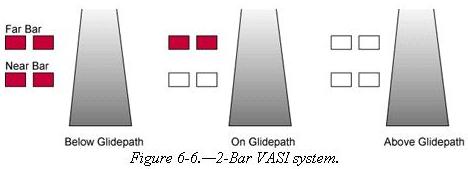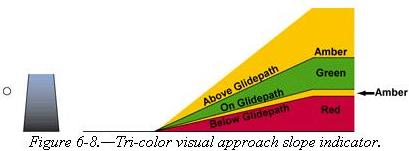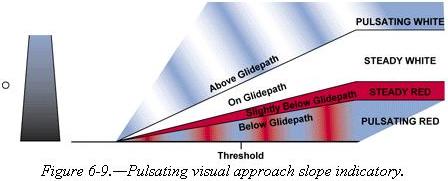| AIRPORT LIGHTING
The majority of airports have some type of lighting for night
operations. The variety and type of lighting systems depends on the volume and
complexity of operations at a given airport. Airport lighting is standardized so
that airports use the same light colors for runways, taxiways, etc.
Airport Beacon
Some of the most common beacons are: • Flashing white and green for civilian land airports. Approach Light Systems Approach light systems are primarily intended to provide a means to transition from instrument flight to visual flight for landing. The system configuration depends on whether the runway is a precision or nonprecision instrument runway. Some systems include sequenced flashing lights which appear to the pilot as a ball of light traveling toward the runway at high speed. Approach lights can also aid pilots operating under visual flight rules at night. Visual Glideslope Indicators Visual glideslope indicators provide the pilot with glidepath information which can be used for day or night approaches. By maintaining the proper glidepath as provided by the system, a pilot should have adequate obstacle clearance and should touch down within a specified portion of the runway. Visual Approach Slope Indicator (VASI) Visual approach slope indicator installations are the most common
visual glidepath systems in use. The VASI provides obstruction clearance within
10° of the runway extended runway centerline, and to 4 nautical miles (NM) from
the runway threshold. The basic principle of the VASI is that of color differentiation between red and white. Each light unit projects a beam of light having a white segment in the upper part of the beam and a red segment in the lower part of the beam. The lights are arranged so the pilot will see the combination of lights shown in figure 6-6 to indicate below, on, or above the glidepath.
Other Glidepath Systems A precision approach path indicator (PAPI) uses lights similar to the VASI system except they are installed in a single row, normally on the left side of the runway. [Figure 6-7]
Runway Edge Lights Runway edge lights are used to outline the edges of runways at night or during low visibility conditions. These lights are classified according to the intensity they are capable of producing. They are classified as high intensity runway lights (HIRL), medium intensity runway lights (MIRL), or low intensity runway lights (LIRL). The HIRL and MIRL have variable intensity settings. These lights are white except, on instrument runways where amber lights are used on the last 2,000 feet or half the length of the runway, whichever is less. The lights marking the end of the runway are red. In-Runway Lighting Touchdown zone lights (TDZL), runway centerline lights (RCLS), and taxiway turnoff lights are installed on some precision runways to facilitate landing under adverse visibility conditions. TZDLs are two rows of transverse light bars disposed symmetrically about the runway centerline in the runway touchdown zone. RCLS consists of flush centerline lights spaced at 50-foot intervals beginning 75 feet from the landing threshold. Taxiway turnoff lights are flush lights which emit a steady green color. Control of Airport Lighting
Taxiway Lights Taxiway lights outline the edges of the taxiway and are blue in color. At many airports, these edge lights may have variable intensity settings that may be adjusted by an air traffic controller when deemed necessary or when requested by the pilot. Some airports also have taxiway centerline lights which are green in color. Obstruction Lights Obstructions are marked or lighted to warn pilots of their presence
during daytime and nighttime conditions. Obstruction lighting can be found both
on and off an airport to identify obstructions. They may be marked or lighted in
any of the following conditions.
|







